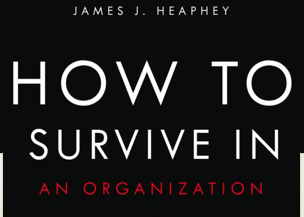At a San Francisco ad agency, I’ve seen an office of well over 600 people in December of 2008 shrink to an office of less than 140.
I got to visit the office on Thursday and it felt like a beehive where the queen bee has left and only hangers on are busy milling about.
How did I survive? (Just to disclose: I am no longer part of the Ad Agency and have found work at a Creative Technology Agency.)
I was the last hire at the SF office in December 2008. It wasn’t until an ex-MySpace executive got hired in November 2009 that the hiring freeze ended. However, there were still additional cuts. I was invited to a lunch where I was told that we were the last folks remaining in December and that there would be no more cuts.
Here’s what got me through that rough year:

This is a pretty awesome book that gives a realistic look into how normal people act when they get into organizations of a certain size. This is the kind of book that will wake you up to the aggressive and covert competition that your office mates engage in to get ahead. I didn’t read this book to get ahead though. Historical forces demanded something more basic: survival.
Here are some helpful hints the book gives:
- find a mentor right away to help you get things done in your organization
- avoid routine work because routines can be automated and don’t show growth
- increase the organization’s dependence on your talents
- gain a reputation for being tough but fair
I think one of my biggest challenges is the last item and its the sort of thing you learn through a mentor.
On the off chance things went really bad and I found myself on the street, I got this book:
This is a no non-sense guide to do exactly what you need to do to survive. I’ve found greens and picked berries in the woods, and also made a lean-to. The book has a waterproof cover and the pages can survive a rain and dry out without getting brittle.

